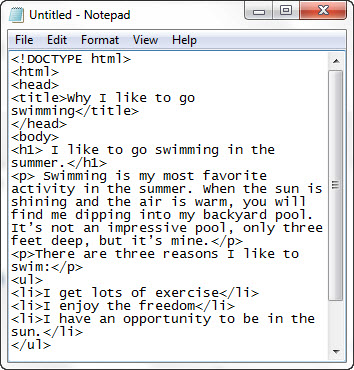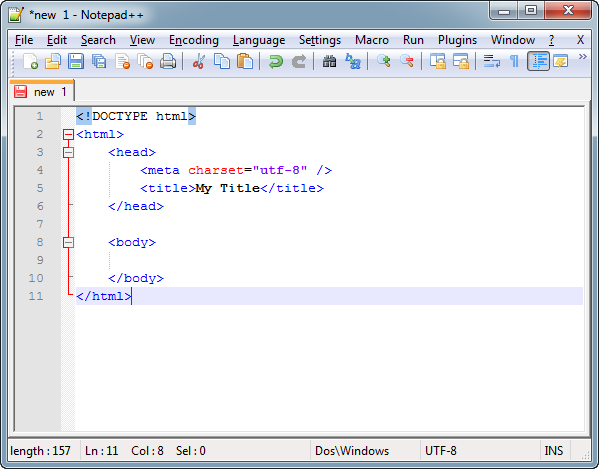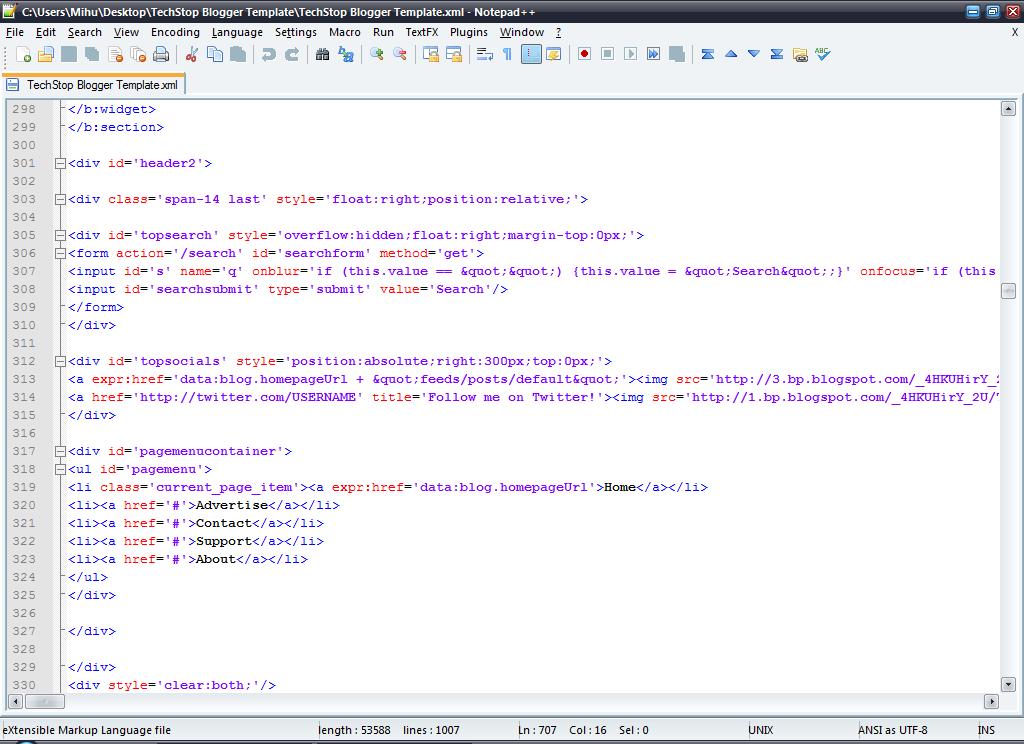
- BASIC NOTEPAD PROGRAM CODE HOW TO
- BASIC NOTEPAD PROGRAM CODE INSTALL
- BASIC NOTEPAD PROGRAM CODE CODE
- BASIC NOTEPAD PROGRAM CODE WINDOWS
Note that we used '.htm' as the file extension. on the desktop.Ĭhange the 'Save as type' from 'Text documents' to 'All files': Save this text somewhere on your hard drive, eg.

The last line marks the end of the JS code.Ģ. The second line is the actual program - it tells the browser to display a popup window ('alert') with the words'Hello world'.
BASIC NOTEPAD PROGRAM CODE CODE
The first line marks the beginning of JS code for the browser. But you don't need any of these things to learn Javascript (I'll be using the acronym JS from now on).įirst let me show you a step-by-step example proving how easy it is and then I'll tell you why I think JS is such a great programming tool.
BASIC NOTEPAD PROGRAM CODE INSTALL
That's it! Other languages may require you to download and install a compiler or an entire development environment others may require setting up an account to access an online programming environment. You can run/test your programs in any browser: Chrome, Firefox, Internet Explorer, Safari, Edge, Opera etc.
BASIC NOTEPAD PROGRAM CODE WINDOWS
You probably already have all the tools you need:Īny text editor will do, including the standard Windows Notepad (Start menu/All programs/Accessories/Notepad).
BASIC NOTEPAD PROGRAM CODE HOW TO
If you are considering learing how to code, Javascript is a great choice. Your first program in Javascript: you need 5 minutes and a notepad QString fileName = QFileDialog ::getOpenFileName( this, "Open the file") When the QAction has been dragged to the toolbar, clicking the icon will launch the associated slot. You assign an icon by entering an icon name in the Icon property of the action concerned. If we also want to add the actions to a toolbar, we can assign an icon to each QAction, and then drag the QAction to the toolbar. To connect the actions to slots, right-click an action and select Go to slot > triggered(), and complete the code for that given slot. This creates 5 lines in the Action Editor below. To add functionality to the editor, we start by adding menu items and buttons on a toolbar.Ĭlick on "Type Here", and add the options New, Open, Save, Save as, Print and Exit. QObjects and the Qt Object model (This is essential to understand Qt) Layout Management, Widgets and Layouts, Layout ExamplesĪpplication Main Window, Main Window Examples The project file specifies the source, header, and UI files included in the project. You can view the generated XML file in the code editor: The UI now looks as follows in Qt Designer: Press Ctrl+S (or Cmd+S) to save your changes.

Press Ctrl+A (or Cmd+A) to select the widgets and click Lay out Vertically (or press Ctrl+L) to apply a vertical layout ( QVBoxLayout).Drag and drop widgets Text Edit ( QTextEdit) to the form.In the Qt Creator Edit mode, double-click the notepad.ui file in the Projects view to launch the file in the integrated Qt Designer.The wizard places the Notepad widget there. The center area can be occupied by any kind of widget. It has its own layout to which you can add a menu bar, dock widgets, toolbars, and a status bar. The wizard creates an application that uses a QMainWindow. ui file and creates a corresponding C++ header file, ui_notepad.h. When you build the application, Qt Creator launches the Qt User Interface Compiler (uic) that reads the. When you open the notepad.ui file in Qt Creator, it automatically opens in the integrated Qt Designer. The wizard generates a user interface definition in XML format: notepad.ui. We will take a closer look at the file contents in the following sections. The files come with the necessary boiler plate code for you to be able to build and run the project. notepad.ui - the UI form for the Notepad widget.notepad.h - the header file of the notepad class for the Notepad widget.notepad.cpp - the source file of the notepad class of the Notepad widget.main.cpp - the main source file for the application.The Qt Widgets Application wizard creates a project that contains a main source file and a set of files that specify a user interface (Notepad widget): In the Class Information dialog, type Notepad as the class name and select QMainWindow as the base class. To create the Notepad project, select File > New Project > Application (Qt) > Qt Widgets Application > Choose, and follow the instructions of the wizard.


Note: The UI text in Qt Creator and the contents of the generated files depend on the Qt Creator version that you use.


 0 kommentar(er)
0 kommentar(er)
